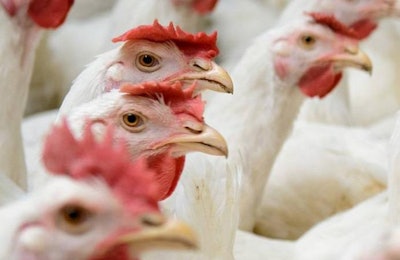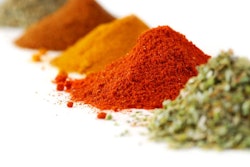
Will antibiotic-free poultry production really do anything to slow the march of antimicrobial resistance?
Not much, according to the authors of a new paper Modelling the impact of curtailing antibiotic usage in food animals on antibiotic resistance in humans. Its authors argue that, as a standalone measure, curtailing the volume of antibiotics consumed by food animals will have little impact on bacterial resistance levels in humans.
Without measures in the human health care sector, and initiatives to reduce transmission, agriculture can only play a very small role in the fight against bacterial resistance, they argue.
A first model
There is still very little robust, quantitative evidence either supporting or contradicting the belief that reducing antibiotics on farm use will slow the development of resistant bacterial infections in humans, so the authors developed a simple mathematical model to test whether this really is the case.
Although widely viewed as intuitively obvious that reducing use in animals would decrease resistance levels in humans, for a wide range of their model’s scenarios this would, in fact, not be the case, particularly if such interventions are made in isolation.
The authors conclude that, in many circumstances, cutting antibiotic usage in livestock production alone has little impact, whereas reducing transmission may be a far more effective strategy for protecting health.
Where human infection is concerned, it is worth remembering that food animals are far from the only source of human exposure to resistant bacteria, and what contribution they do make to infections in humans is still to be quantified.
There will be many different answers to the quantification questions, just as there are many combinations of antibiotics, bacterial strains, and farm animal species. Each of these will have their own dynamics, vary from country to country, each with their own healthcare and agricultural systems.
Human to animal transmission
The authors note that a factor rarely examined is the transmission of resistant bacteria from humans to animals, and that this will have an impact on the success of any intervention. The model revealed that, whenever the rate of antibiotic resistant bacteria passing from humans to animals is high, it is harder to curb the resistance problem.
If resistance dynamics in humans and animal populations are coupled, which is generally thought to be the case, substantial impacts on levels of resistance require coordinated action across both populations. It is not enough simply to lower the consumption of antibiotics in food animals, the transmission both from, and to, food animals must be limited to maximize the impact of any intervention.
But this does not mean that poultry producers should throw caution to the wind where antibiotics are concerned. The authors note that a failure to address agricultural antibiotic use severely limits what can be achieved by tackling the problem from the human side.
The paper has been welcomed by responsible medicines use agricultural and food alliance, RUMA, but it cautions that the researchers’ simple model can only give an indication of outcomes.
In response to the paper, RUMA chairman, Gwyn Jones, stressed the need for a One Health approach across human and animal health, and that the food and farming sector should not in any way dilute its focus on reducing, refining and replacing antibiotics across all sectors. He continued that the current drive for antibiotic-free farm production, however, is not necessarily beneficial for human health and makes any detrimental impacts on animal health and welfare even more unjustifiable.
Comprehensive resource for antibiotic-free poultry production available
A new collection of exclusive articles, blogs, infographics and videos on antibiotic-free poultry production, by trusted WATT Global Media editors and industry experts, equip poultry producers and marketers with information to help them make critical business decisions. Purchase your copy.


















